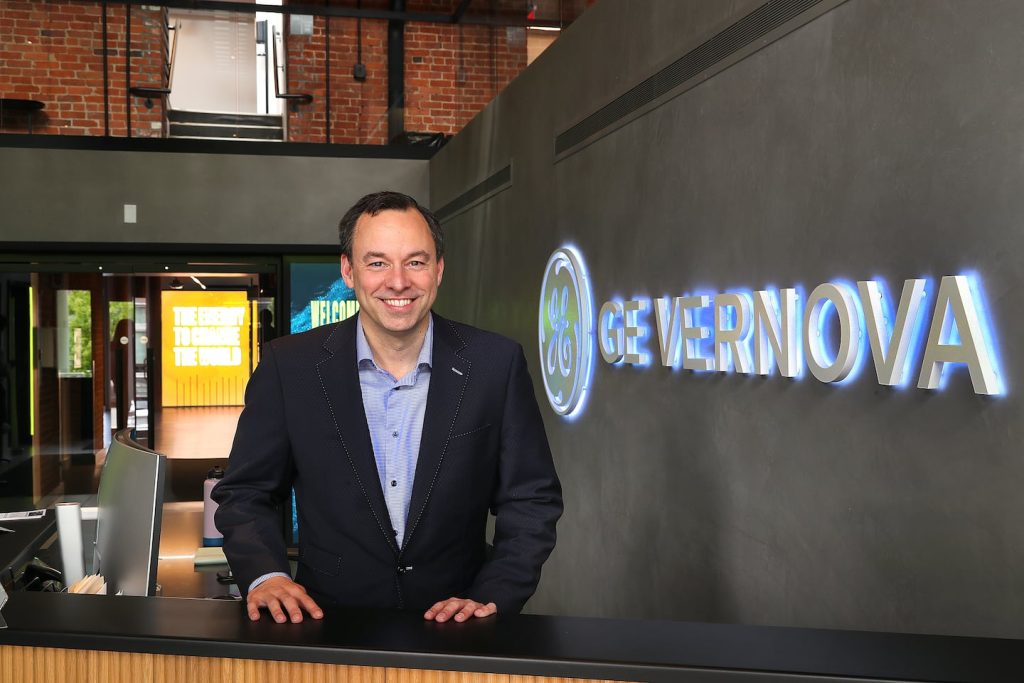GE Vernova is celebrating its first birthday this week with a $50 million commitment to its neighbor, MIT.
Before the energy spinoff from General Electric emerged as a separate public company one year ago, chief executive Scott Strazik had to pick a headquarters location. Strazik settled on Cambridge — not because its former parent had been based in Boston, but because of all the brainpower that originally attracted GE here in 2016.
The company’s new partnership with MIT is a perfect example of why Strazik picked Cambridge. GE Vernova announced on Monday, two days before the spinoff’s anniversary, that it’s committing $50 million to MIT over five years to pay for various graduate-level research projects and to cultivate the next generation of energy engineers and scientists by supporting internships. The work will begin in September, with 12 research projects a year targeting three main areas: how to build out and retrofit the electric grid of the future more efficiently, accelerate breakthroughs in carbon-free energy solutions, and drive more innovation in renewable power (such as wind power and energy storage). In many cases, professors and students at MIT will be teamed up with scientists at GE Vernova’s research center outside of Albany, N.Y., where some 350 scientists work.
The MIT partnership coincided with the launch of GE Vernova’s first brand campaign, dubbed “The Energy of Change,” aimed in part at building awareness of the company — one of the country’s biggest energy businesses, on track for up to $37 billion in revenue this year — and attracting talented young professionals who might otherwise be considering roles at big tech firms and other blue-chip companies.
Unlike GE’s tenure in Boston, which ultimately ended in the company breaking apart, GE Vernova’s emergence in Cambridge is paying off so far, Strazik said in an interview. (The headquarters itself is relatively modest, with about 100 of the 75,000-person global workforce based there.) GE Vernova essentially doubled its cash balance in the past year, to $8 billion. And the company has minimal debt — unlike its former parent. That gives GE Vernova more leeway to invest in acquisitions and university partnerships.
“It’s what gives us the opportunity now to make the announcement … with MIT, to invest into an alliance with them,” Strazik said. “This is really foundational, and yes, it’s helpful that we share the same neighborhood, but it’s more than that. There’s shared values here, and, I would say, practical ambition that we’re incredibly motivated to work with them on.”
Strazik reached out to MIT chief strategy officer Anantha Chandrakasan in 2023 to start figuring out ways to better connect GE Vernova with the university, its professors, and its students. The $50 million alliance is an outgrowth of those discussions. MIT has other partnerships with big companies, such as IBM and Takeda, but this one with GE Vernova is one of the largest in terms of the funding levels, he said.
“A great amount of innovation happens in academia. We have a longer view into the future,” Chandraksan said of the GE Vernova partnership. “[While] they have the ability to get products out quickly to scale up, to manufacture, we have the ability to think past the short-term. … It’s super smart of them to surround themselves with this incredible talent in academia. That will allow us to make the kind of breakthroughs that will keep US competitiveness at its peak.”
Jon Chesto can be reached at jon.chesto@globe.com. Follow him @jonchesto.

